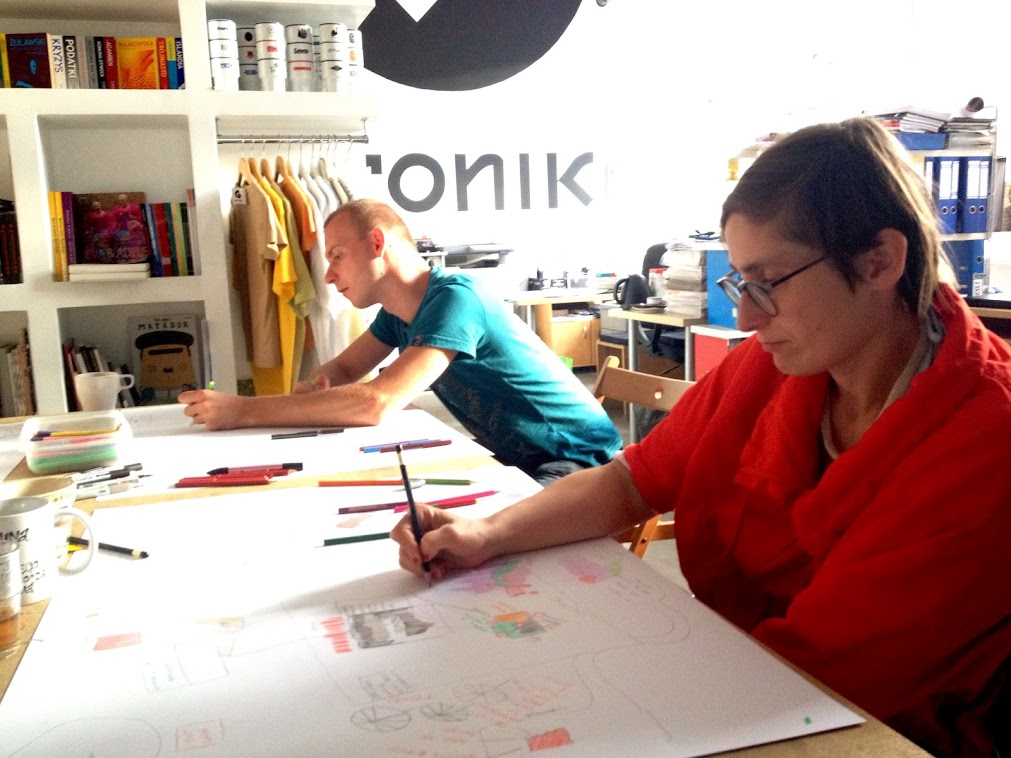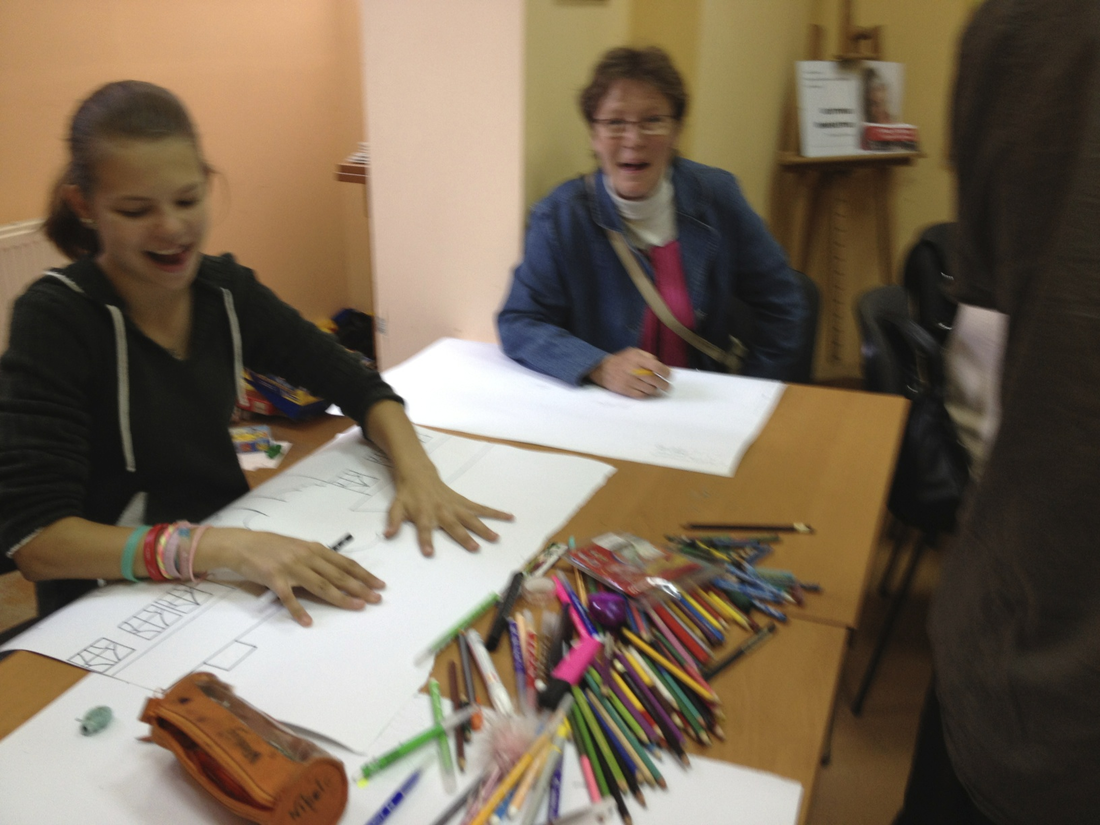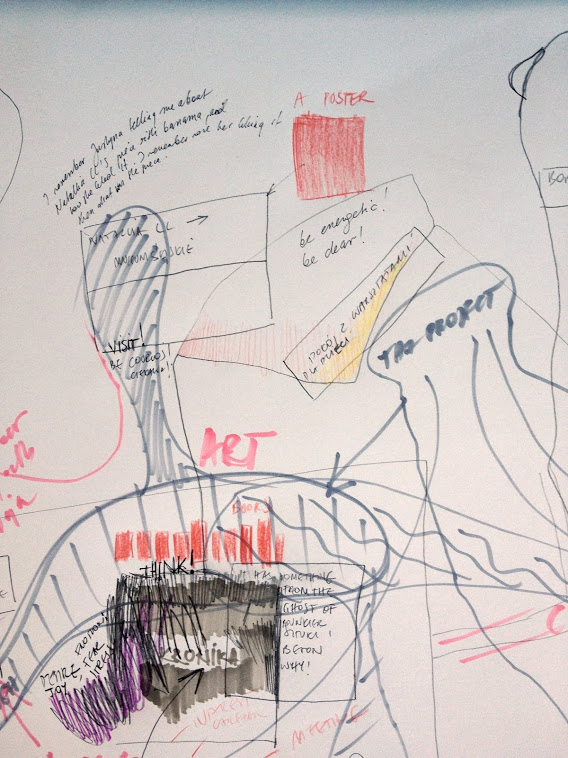Drawing and diagram workshop documentation from the project "Life in Bytom", 2012
Here participants were asked to draw a diagram following my instructions to depict different layers of their everyday experience. The material, emotional, intuitive, political and social flows were depicted here.
PRODUCTION OF TRANSFORMATION IN ART PRACTICES
The contemporary capitalist paradigm aims to capture potential knowledge, but only succeeds in building a promise of fulfilment. Adversely, we may experience a possibility of potentiality in our presence. (Virtanen 2011, 57) For this potentiality to be actualized, it requires signification by speech or other semiotic expressions and this process does not necessarily produce explicit meaning, but rather affects. Capitalist production’s aim to capture potential knowledge, remains an attempt to control its full potentiality.
An artistic practice concerning affects also aims to actualize potentiality. It aims to produce “more mutations, more lines of flight, more alternative temporalities.” (O’Sullivan 2007, 5) To distinguish such a practice from the overall knowledge production of capitalism, artistic practice must carry out actualization with rigour, and aim not for the truth of this potential, but for mutations and variations instead. There is no identical actualization of potentiality, only interpretations and variations. However, capitalist knowledge production creates predominant refrains [2], which are based on the promise and obstructions of alternative articulations of potentiality. (O’Sullivan 2007, 4) Such dominant articulations organize subjectivity in the present conditions of neoliberal and post-industrial semio-capitalism. The dominant articulation produces a ‘home’ or ‘nest’, where only specific components are protected, in other words, specific interpretations of the potential are nurtured while minor ones diminish ever further. Repetition modulates and translates potential and such articulation acts as a refrain, which provides orientation for subjectivity, like a lullaby sung to children or a form of camouflage, for example the Brazilian Caligo butterfly described by Roger Caillois [3]. (Deleuze and Guattari 2004, 311)
Artistic production cannot produce any affective transformation in actuality, unless it seriously considers its task to produce expressive support for minor refrains. Affective production itself does not create anything ‘new’ – new subjectivities, approaches, alternatives – when artistic and affective production aims only to produce discord for the dominant refrains. Dissonance for the dominant refrain is not yet new, nor does it alter the actualization of potential. Simon O’Sullivan argues for the distinction between the repetition with the same, and repetition with a difference – as seen in fashion and art. (O’Sullivan 2008, 91) Repetition with a difference is not a simple recombination – reorganization or mixing of heterogeneous materials in the way fashion industry does it – but production of an impasse, denoting transformation. (O’Sullivan 2008, 95) This is what practice does. Impasse may be frequent or rare in the process of artistic production, but it is essential for any modulation of potentiality with a difference. Impasse, as described in the language of Gestalt therapy, is a:
“situation in which external support is not forthcoming and the person believes he cannot support himself. The latter is due in large part to the person's strength being divided between impulse and resistance. The most frequent method of coping with this is to manipulate others.” (Yontef 1993)
Difference may feel like failure or disaster, thus it is avoided by returning to ‘nesting’ refrains and ‘home’. However, if an alien and threatening refrain gains expressive support, in other words if it begins to actualize, such a “rupture itself needs to be followed by new refrains, new habits.” (O’Sullivan 2008, 96) We cannot reside in the impasse or stay in the liminal stage infinitely, we must return and only in the act of returning does the production of the ‘new’ occur. The emergence of transformation is the task of alternative artistic production.
Next section: The concepts of plasticity and sponge
Previous section: Abstract and introduction
[2] Guattari on refrains: ”I would say that the refrain does not rest on the elements of form, material, or ordinary signification, but on the detachment of an existential "motif' (or leitmotif) instituted as an "attractor" in the midst of sensible and significational chaos.” (Genosko 1996, 200)
[3] “it exposes them abruptly with their two large blue "eyes" on a red background, giving the aggressor a sudden fright. The butterfly, wings spread, thus becomes the head of a huge bird of prey […] the "eyes" of the Caligo should probably be compared to the apotropaic Oculus indiviosus, the evil eye that can not only harm but protect, if one turns it back against the evil powers to which, as an organ of fascination par excellence, it naturally belongs.” (Caillois 1935/1984, 18-19)


